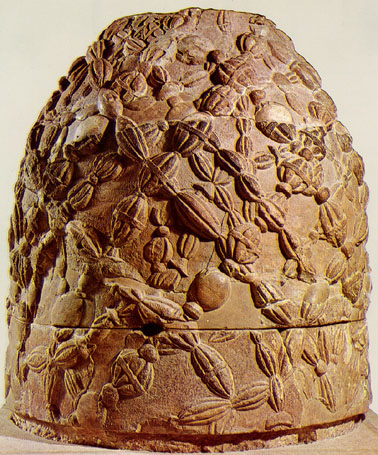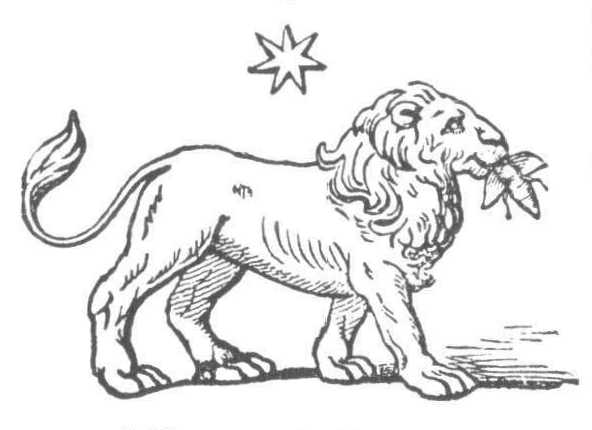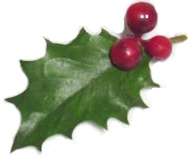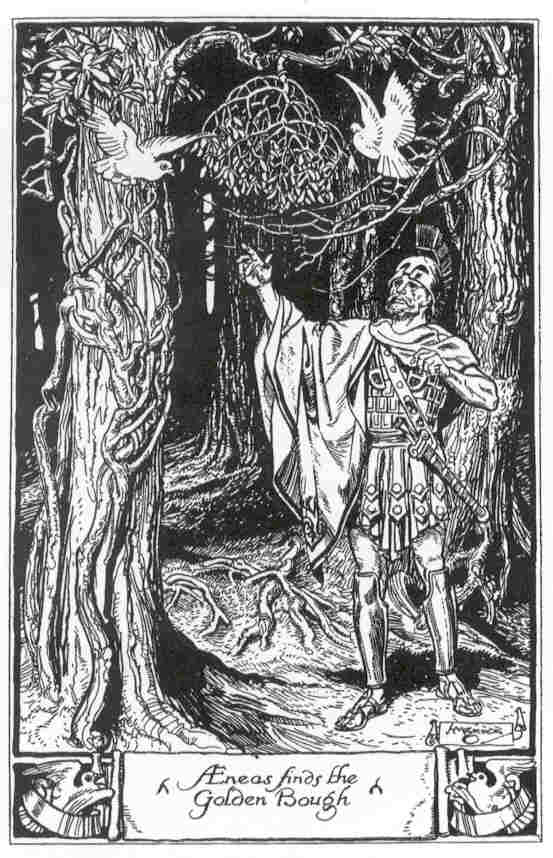"Somebody Cooked Your Goose" - Part Three
A Christmas Study by Tricia Tillin
Christmas is a subject that intrigues, interests and sometimes inflames Christians on both sides of the argument. Those outside Christianity would think it strange that we even have an argument for and against, but throughout the centuries the debate has rolled on, without a firm conclusion. Should we as Christians celebrate the festival that has become known as Christmas?
The bible can be interpreted in various ways on this topic, but is not totally conclusive. The danger lies is being reactionary or harsh. At the end of the day, the bible commands respect for others as well as obedience to God:
Index to the Four Parts
To some extent, the use of candles, lamps and torches serves the same purpose as fires. However, the religious rites surrounding the Christmas Candle, like the Paschal Candle, point to a somewhat different meaning. These special candles are lit at the commencement of the festival and are made to burn continuously; it is an ill omen if they are extinguished accidentally. Afterwards they are valued as charms and are used in fertility ceremonies in much the same way as is the Yule Log.
Candles are especially used at Christmas. In recent times, just as in ancient Rome, they have been given as presents. They were also carried processionally, and lit in windows as well as decorating the fir tree. Today we often see a window lit up by a set of Christmas candles.
Various Candle Customs
In Ireland, the
Twelfth Night custom was to set a ring of candles in a sieve of oats with
one large candle in the centre, and this had its echo in England where
bonfires were used instead. In either case, as with a circle of dancers
enclosing a single person or bonfire, the symbol is of a dot within a
circle which is a sun-god sign.
In Turkey, lamps and candles were lit once a year to the sun god, and in Babylon and Rome torches and tapers were lit before the images of the gods. Wax candles were placed on the altar of Tammuz, just as they were on the altar of Saturn in Rome. One historian writes, "on his altars wax tapers were lit because by Saturn men were reduced from the darkness of error to the light of truth".
At the Saturnalia, gifts of candles were made; processions took place where the image of the gods were carried with great ceremony accompanied by priests with wax candles in their hands, followed by youths in vestments singing hymns in honour to the god. The crowds also held wax candles on these occasions.
With the advent of Christianity, people placed candles in the window at Christmas time to light the Christ Child’s way to their home. A single large Yule candle came to represent Christ himself as the light of the world. In 1817, it was customary to place the eighteen-inch Yule candle on the dinner table Christmas Eve. The head of the household would light it after dusk and, once lit, it couldn't be moved. When the time came to extinguish the candle, it had to be snuffed, not blown out. The Yule candle was lit every day during the Twelve Days of Christmas. Like the Yule log, a piece was saved to light the Yule candle the following year.
Although the use of candles was so foreign to the true Church that it was ridiculed in the fourth century by a Christian writer as a "useless pagan practise", later on, as the gospel truth diminished, candles were increasingly used to light altars and burn before the various images of the ‘saints’.
That the Roman Church saw in this emblem a mysterious meaning is plainly seen in a prayer addressed to God at Easter which offered "the unpolluted sacrifice of the wax Easter candle" as "a great mystery -.which must needs be extolled with due and deserved praises".
Why are church candles always made of beeswax?
To bring us closer to the heart of this mystery, we must consider another Latin blessing of the Easter tapers, from 1880, which praised the bees which provided the wax: "They bring forth young from their mouths, like as Christ proceeded from his Father’s mouth.. .therefore 0 Lord are such worthy gifts offered upon Thy altar"
Add to this the statement, in 1841, that "the origin of bees is Paradise, therefore the mass cannot be said without beeswax" and the belief that bees possessed a portion of the divine breath which was bestowed upon Adam and Eve in Eden, and we begin to see that it is the bee and its wax which is the important symbol for the initiates of the mystery religion.
So vital was the use of beeswax to the Roman Church that before the Reformation no abbey or monastery was without its colony of bees and resident Beekeeper. The chief church in Wittenburg was reported to have used 3,000 lbs of wax. Almost as if to excuse this activity, literary parallels were drawn between the humble, industrious and (some said) chaste bee and the monks in their monasteries, or the Church as a whole with the Pope as ‘King Bee’.
Also, the bee was considered symbolic of Christ and Mary, for the bees were said to "produce posterity yet retain their virginity". All of this is a cover for the truth.
The Church was not the only user of beeswax. It was equally prized for he making of votive images in pagan temples. Wax representations of various parts of the body in need of healing were offered before the idols.. As well as this, wax images were, and still are, produced for the purpose of cursing, the little figures being stuck with pins, burnt or drowned.
Not just the wax, but all the produce of the bee was special and sacred. It was nectar or ambrosia on which the gods dined, and which gave them their immortality. Odin drank mead, which was a fermented honey drink. Zeus was raised on honey in a cave of bees; honey was offered to the gods and smeared on the lips of babies as protective magic.
What, then, is the secret of the bee? It is that the Chaldee word for a bee is DABAR which also means a WORD going forth (prophecy). Jesus is referred to as the Word of God, as the Hebrew for the Word is also "dabar".
 The
Old Testament prophetess Deborah takes her name from this word,
and the priests and priestesses of old were
called Melissae or Essenes (bees). Pictured is Melissa, the Bee goddess of Mount Eryx. The goddess Artemis herself was called a bee, and
Demeter was addressed as ‘Pure Mother Bee’. The priestess of Apollo at
the Delphic Temple was called the ‘Delphic Bee’ and the bee was also the
symbol of Diana and Ceres, supposedly because of its virginity. In India
and China, too, the gods are depicted as bees.
The
Old Testament prophetess Deborah takes her name from this word,
and the priests and priestesses of old were
called Melissae or Essenes (bees). Pictured is Melissa, the Bee goddess of Mount Eryx. The goddess Artemis herself was called a bee, and
Demeter was addressed as ‘Pure Mother Bee’. The priestess of Apollo at
the Delphic Temple was called the ‘Delphic Bee’ and the bee was also the
symbol of Diana and Ceres, supposedly because of its virginity. In India
and China, too, the gods are depicted as bees.
The Inspirational Bee (1)
The
bee and its produce has long been recognised as inspirational, for the
poets and singers of old were said to have been touched by ‘the spirit
of the skilled bee’ and the gods sent bees to the lips of those whom they
inspired, or anointed their mouths with honey. The famous Delphic Oracle was called "The Delphic Bee" and the Omphalos stone at Delphi is hive-shaped and covered with bee-like designs; Delphi housed prophetic bee priestesses who would ingest a honey substance before prophesying.
The above stone was originally placed in the heart of the sanctuary to Apollo, where the Pythia would give the god's oracles...The spot where it stood was believed to be the center of the world (hence the name omphalos, or 'belly-button'). Why the decoration on this stone? According to ancient accounts, there was originally a different omphalos stone at Delphi, prior to the one shown here (which was made as a replacement in the 4th cent BC). The first stone was a meteorite, and was draped in an argenon, or woven net, thus creating an effect reminiscent of woven beehives (note that bees from the Bronze Age on were a symbol of death and resurrection). But please recall from footnote 3 of Part Two that "The Disa or Isa of the north [Isis] was represented by a conic figure enveloped in a net"
Clearly the produce of the bee was known to be "the word of prophecy" or the oracle of the inspired divinity. In this hymn to Hermes we see the bee priestesses in action:
"What time they fed on honey fresh, food of the gods divine,
The holy madness made their hearts to tell the truth incline,
But if from food of honeycomb they needs must keep aloof,
Confused they buzz among themselves and speak no word of sooth."
It was commonly believed that bees were produced from the carcass of the bull. This makes no sense until one realises that the Roman word for bee is APIS. The Egyptians held the bull and the bull-god Apis most sacred and it was considered to embody the soul of Osiris.
 The
bee is also associated with the lion. Our Messiah is the Lion of Judah,
(Rev 5,5) but satan also is likened to a roaring lion
in search of prey in 1 Peter 5,8. Thus the lion symbol was a powerful
one for those who knew its meaning.
The
bee is also associated with the lion. Our Messiah is the Lion of Judah,
(Rev 5,5) but satan also is likened to a roaring lion
in search of prey in 1 Peter 5,8. Thus the lion symbol was a powerful
one for those who knew its meaning.
The drawing left is from Hyde, De Vetere Religione Persarum, p.113. it is taken from a jasper cameo. The lion is shown with a bee in its MOUTH. (Remember, DABAR means "word".)
The tomb of Childeric I (d.482) the son of Merovee, from whom the Merovingian kings descended was found to contain not only artifacts of sorcery but no less than 300 bees of solid gold. Later, Napoleon had his robes made of Merovingian green and covered with the golden bees.
Among the lesser known candle celebrations of Christmas time are Christingle and St. Lucia Day, both becoming more popular.
Christingle was a pagan
festival of light which was first ‘christianised’ in Protestant Moravia
in the eighteenth century. The ceremony is  centred on an orange pierced
with a lighted candle, probably a symbol of the sun-god but now said to represent the earth. This festival has now been revived by the Church of England
Children’s Society and is used as a way of raising money for charity. It has been sanitised and reinvented with a story about the christingle as a "nice gift for children".
centred on an orange pierced
with a lighted candle, probably a symbol of the sun-god but now said to represent the earth. This festival has now been revived by the Church of England
Children’s Society and is used as a way of raising money for charity. It has been sanitised and reinvented with a story about the christingle as a "nice gift for children".
St. Lucia Day (the name means ‘light’) was similarly created by the Church to fit in with an existing festival. Lucia’s day is 13th December, and in Sweden it is known as Little Yule. Before the Gregorian reform of the calendar, her day was the shortest of the year, the true solstice.
On this day, a Lucia Queen is chosen. She is dressed in a white dress with a red sash and is crowned with a coronet of twigs containing candles. Like the May Queen, Lucia visits each house in the parish with her attendants, boys in red beards carrying torches or candles. The houses and public buildings are ablaze with illuminations, and in Sicily the day is kept as a fire festival with the usual dancing around the bonfire.
CANDLEMAS is now supposed to commemorate the purification of the Virgin and the entrance of Jesus, as the Light, into the Temple. It falls on the day which the ancients called Imbolc, the feast day of Brighid, whose name means ‘Exalted One’, the goddess of fire and fertility and forerunner of the Virgin Mary. The distinctive rite of Candlemas is the blessing of beeswax candles which are then distributed and lit and carried in procession to symbolise the coming of Light into the world. The similar Roman custom has already been noted.
The materials used for decoration at the Winter Solstice have always been evergreen. They are said to represent everlasting life, light in the darkness and a return from death. Holly, ivy and mistletoe are especially sought after, though other evergreens are used.
Like the Yule Log, the evergreens of Christmas have long been prized as emblems of fertility and good luck and their true meaning has been obscured. The Church, although vainly protesting against the pagan associations of such greenery, was not able to prevent the people adorning their houses with laurels, green trees and such like, and in the l5th century it was said that, "every-man’s house, as also parish churches, were decked with holme, ivy, bays and whatsoever the season of the year afforded to be green."
Well before the festival we know as Christmas began, pagan temples were also decked with evergreens for their winter festival, and in Rome laurel and bay were used as decorations, and green garlands were made and worn. The original gifts given at this time were twigs and branches from the sacred groves and when, later on, more general gifts such as honey, candles and lamps and gold and silver were given, the word ‘strenae’ (twigs) was still used for them.
The Kissing Bough
Before
the advent of our Christmas Tree, a kissing bough was commonly made from
a double hoop or wreath of evergreens looped with ribbons and decorated
with gold and silver baubles, red apples, candles and mistletoe. The candles,
like the Yule Candle, were lit on Christmas Eve and made to burn throughout
the festival. The mistletoe was the most important part of the kissing
bough, indeed, it was often called ‘the mistletoe’. It is also reported
that twin dollies were placed in the branches of the kissing bough.
The symbolism of the twin hoops and twin dolls of the kissing bough, and also to some extent the meeting of lips beneath the mistletoe is one of the union of opposites, a cornerstone of pagan beliefs worldwide. In mythology, twins represent light and darkness, good and evil, heaven and earth in eternal enmity or Yin and Yang in Eastern cultures. Osiris and his brother Seth were twins; so were the Scandinavian gods Baldur and Loki. Cain and Abel are seen as twin brothers in mythology, as are the archangels Lucifer and Michael.
Holly
In 1779, a strange Kentish custom was noted involving the burning of two effigies, the Holly Boy and the Ivy Girl. Holly is popularly taken to be a male emblem, and symbolises the sun god in his death and resurrection. Ivy is the female element and the name is identical to EVE (Ivi). "The Holly and The Ivy" is one popular Christmas folksong that suggests a deeper meaning.
The name of this plant may be an old English corruption of ‘The Holy’ and even ‘The Babe’, for the Hebrew for Baby is OLAL. (Footnote 2) It was certainly known as a sacred plant long before the birth of Jesus, and was used to adorn the head of Saturn during the Saturnalia in Rome. Romans decorated their Saturnalia holly wreaths with clay figurines and candles. They lit tall waxed papers as votive offerings to Saturn.
 The
red berries of the holly are of particular importance, for they signify
not only the sun (as do the gold and red baubles on the tree and kissing bough)
but also red drops of blood. The blood, however, is not that shed by Jesus
but that of the false god at his solstice death, which was said to stain
the river Adonis red at the time of his festival in Phoenicia. The red
anemone was said to have sprung from his blood, and the red rose was sacred
to the virgin mother goddess, who stained it with her blood as she hastened
to her dying lover/son. (This is why the red rose is the symbol of love
to this day).
The
red berries of the holly are of particular importance, for they signify
not only the sun (as do the gold and red baubles on the tree and kissing bough)
but also red drops of blood. The blood, however, is not that shed by Jesus
but that of the false god at his solstice death, which was said to stain
the river Adonis red at the time of his festival in Phoenicia. The red
anemone was said to have sprung from his blood, and the red rose was sacred
to the virgin mother goddess, who stained it with her blood as she hastened
to her dying lover/son. (This is why the red rose is the symbol of love
to this day).
Ivy
 Ivy
is the female emblem, the counterpart to the holly. As the red berries
of the holly point to Adam, so the Ivy is Eve, the word coming from the
Hebrew ‘IVI’ for ‘life’. The leaf of the ivy is five-lobed just as the star of Venus is five-pointed.
Ivy
is the female emblem, the counterpart to the holly. As the red berries
of the holly point to Adam, so the Ivy is Eve, the word coming from the
Hebrew ‘IVI’ for ‘life’. The leaf of the ivy is five-lobed just as the star of Venus is five-pointed.
Ivy was particularly sacred to the gods, especially to Bacchus (Dionysus), Apollo, Attis and Osiris. Cupid, the infant son of Jupiter, is often shown surrounded by a wreath of ivy.
 The
Bacchanals, the frenzied worshippers of Bacchus, ate ivy and were intoxicated
with the plant, and it was held so sacred in Rome that the priest of Jupiter
was not allowed to touch or even to name it.
The
Bacchanals, the frenzied worshippers of Bacchus, ate ivy and were intoxicated
with the plant, and it was held so sacred in Rome that the priest of Jupiter
was not allowed to touch or even to name it.
Ivy was also sacred to Attis, and his eunuch priests were tattooed with a pattern of ivy leaves. Osiris of Egypt was associated with the ivy and it was called his plant. Although Dionysus (left, wearing an ivy wreath hung with leaves and berries) was a god of wine and of the pine tree, the ivy and the fig tree were especially associated with him, and in the Attic town of Acharnae there was a Dionysus Ivy which was revered as the god himself.
What, then, is the meaning of the ivy? Why do we see it woven into garlands to adorn the gods and the heads of his worshippers? Once again, the mystery religion of Babylon was wound even into this humble plant, for its name in Greek was KISSOS (a name given to Bacchus) and this is the name CUSH as pronounced by the Greeks. The name Bacchus may originally have been BAR-KUSH (son of Cush). (Footnote 3)
Cush, of course, was the father of Nimrod (Genesis 10,8). Nimrod, then, was the ‘branch of Cush’ or the ‘branch of ivy’.
Not many would deny the magical and pagan associations of the mistletoe bough. Even devout believers who are happy to set up a Christmas tree and burn a Yule Log will nevertheless do not permit mistletoe in the house. It has been banned as a decoration in churches, with the notable exception of York Minster where a branch used to be laid on the high altar at Yuletide.
Perhaps, in this country at least, we still dimly recall that the Druids worshipped the mistletoe branch and made it a central part of their winter celebrations. They hailed the plant as a universal healer and charm, and it was placed on their altars at the winter solstice where two white bulls were sacrificed.
After preparing for a sacrifice and a feast under the oak, they hail the mistletoe as a cure-all and bring two white bulls there, whose horns have never been bound before. A priest dressed in a white robe climbs the oak and with a golden sickle cuts the mistletoe, which is caught in a white cloak. Then they sacrifice the victims, begging the god, who gave them the mistletoe as a gift, to make it propitious for them. They believe that a potion prepared from mistletoe will make sterile animals fertile, and that the plant is an antidote for any poison. (Natural History, XVI, 249-251; translation by David Beaulieu).
It has been thought that this veneration of the plant was because of its relative rarity, especially when found growing on the oak. The oak tree, the tree of Thor (Zeus) was the sacred tree of the Druids, whose worship took place in groves of oak. The Hebrew word for the oak is ALLAH, (one ancient name for the moon-god, who is perfectly honoured by the moon-shaped mistletoe fruit) and this perhaps explains its particular place in worship.
The mistletoe is the plant of the moon. Its round pearl berries are the moon and its name was Soma, All-heal, which is the Indian name of the Moon-god. Also, interestingly, this is the name of the inspirational divine food of the gods in that country. The golden sickle with which it is cut down resembles the moon and its special feast is one of the full moon. The Sanskrit word for moon is massa.
All over the world, the mistletoe has gained a reputation for healing, fertility and good luck. It is worn as a magic charm, in Africa for instance, and in France and Germany it was a remedy for epilepsy and barrenness, and it gave protection against lightning and witchcraft. In Austria, It was laid on the threshold to prevent nightmares, and it was fed to cows in England at New Year to protect the calves and to promote a good milk supply for the coming year.
 J.G.
Frazer and many others have concluded that mistletoe is the famous 'Golden Bough of Aenaes',
the Greek hero, who used it to open the gates of death and immortality. The ability to travel to the underworld (or other spirit places) was achieved by eating or drinking hallucinogens. (footnote 4)
J.G.
Frazer and many others have concluded that mistletoe is the famous 'Golden Bough of Aenaes',
the Greek hero, who used it to open the gates of death and immortality. The ability to travel to the underworld (or other spirit places) was achieved by eating or drinking hallucinogens. (footnote 4)
Balder Killed by Mistletoe
One Teutonic god who is especially associated with mistletoe is Balder, the son of Odin, whose name means 'seed of Baal' (Baal-zer).
This god, like the others of his type, met a violent death but in a curious way. Balder having had a premonition of death, his mother Frigga asked all things on earth to swear never to harm her son, but she omitted to ask the mistletoe.
Loki, Balder's evil brother, had the mistletoe fashioned into a dart and had it aimed at Balder, who died amid the usual great lamentation we have come to expect in these dying god myths.
He was launched out to sea on a boat and was subsequently rescued (resurrected) from the Underworld. [This story is almost identically to that of Osiris.]
This strange use of mistletoe may be a corruption of an earlier Norse tradition speaks of a magical sword being used to slay Balder, and the name of this sword was Mistillteinn.
Footnotes
(2) Harold Bayley in "The Lost Language of Symbolism" derives the word "holly" from the word used for other species of plants and trees, ie OLN or OLAN, from which trees like Elm and Oleander take their name. In Greek, OLUN is the olive, and in Hebrew ALON is the oak. But this carries a double meaning, because the word also means a god, or mighty one. AL = Most High, and Allah (the Arabic god) is "oak tree". EL = God, and ELAH is Elm/Oak/Tall Tree or God.
(3) "No emblem was more distinctive of the worship of Bacchus than ivy. Wherever the rites of Bacchus were performed, wherever his orgies were celebrated, the Ivy branch was sure to appear. Ivy, in some form or other, was essential to these celebrations. The votaries carried it in their hands, * bound it around their heads, * or had the Ivy leaf even indelibly stamped upon their persons. * What could be the use, what could be the meaning of this? A few words will suffice to show it. In the first place, then, we have evidence that Kissos, the Greek name for Ivy, was one of the names of Bacchus; * and further, that though the name of Cush, in its proper form, was known to the priests in the Mysteries, yet that the established way in which the name of his descendants, the Cushites, was ordinarily pronounced in Greece, was not after the Oriental fashion, but as "Kissaioi," or "Kissioi." Thus, Strabo, speaking of the inhabitants of Susa, who were the people of Chusistan, or the ancient land of Cush, says: "The Susians are called Kissioi," * --that is beyond all question, Cushites. Now, if Kissioi be Cushites, then Kissos is Cush. Then, further, the branch of Ivy that occupied so conspicuous a place in all Bacchanalian celebrations was an express symbol of Bacchus himself; for Hesychius assures us that Bacchus, as represented by his priest, was known in the Mysteries as "The branch." * From this, then, it appears how Kissos, the Greek name of Ivy, became the name of Bacchus. As the son of Cush, and as identified with him, he was sometimes called by his father's name--Kissos. * His actual relation, however, to his father was specifically brought out by the Ivy branch, for "the branch of Kissos," which to the profane vulgar was only "the branch of Ivy," was to the initiated "The branch of Cush."...Thus from Assyria, Egypt, and Greece, we have cumulative and overwhelming evidence, all conspiring to demonstrate that the child worshipped in the arms of the goddess-mother in all these countries in the very character of Ninus or Nin, "The Son," was Nimrod, the son of Cush. A feature here, or an incident there, may have been borrowed from some succeeding hero; but it seems impossible to doubt, that of that child Nimrod was the prototype, the grand original. " The Two Babylons
Alexander Hislop Chap2, Sect II
(4) "The idea that the life of the oak was in the mistletoe was probably suggested, as I have said, by the observation that in winter the mistletoe growing on the oak remains green while the oak itself is leafless". [Sir James George Frazer (1854–1941). The Golden Bough. LXVIII. 1922]

